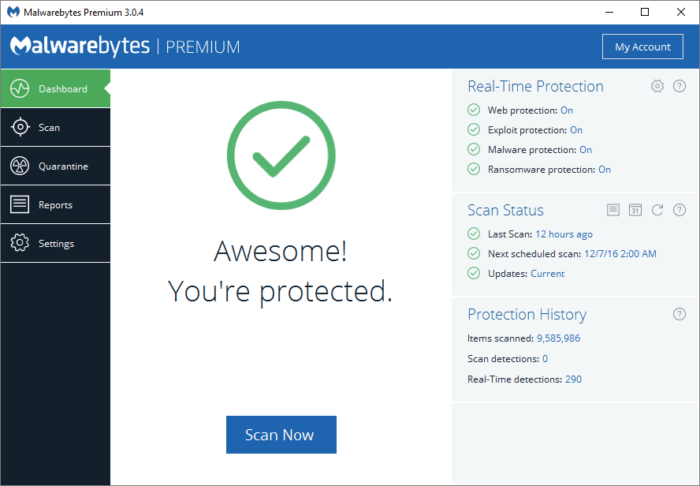Every day, cybercriminals target individuals and businesses with malware, ransomware, and phishing scams. These threats aren’t just annoying—they can wipe out savings, steal identities, or destroy years of work. While no tool is a magic shield, understanding how to tackle these issues head-on can save you time, money, and stress. Malwarebytes Premium can protect your more than what you can expect including “Web Protection” module blocks malicious sites, even on unsecured networks.
In this guide, we’ll break down common cybersecurity problems, explain how Malwarebytes Premium can help solve them, and share free alternatives for those on a budget. Let’s get practical.
 —————Recommendations; Please continue reading below————— Space-saving Furniture Shop Now
—————Recommendations; Please continue reading below————— Space-saving Furniture Shop Now
If you want to maximise space in your home, office or home-office with flexible furniture that collapses, folds, and stacks to fit every room, you can click here to see the wide range of space-saving furniture. Click here to learn more >>>
Problem 1: “My Computer Is Infected with Ransomware. How Do I Save My Files?”
The Threat:
Ransomware encrypts your files and demands payment (often in cryptocurrency) to restore access. Hospitals, schools, and individuals have lost critical data to these attacks.
Step-by-Step Solution:
- Disconnect Immediately: Unplug your device from the internet to prevent the ransomware from spreading.
- Identify the Strain: Use free tools like ID Ransomware to determine the ransomware type.
- Restore from Backups: If you have backups (stored offline or in the cloud), wipe your device and restore files.
- Use Anti-Ransomware Tools:
- Malwarebytes Premium includes specialized anti-ransomware layers that block encryption attempts.
- Enable its “Ransomware Protection” module in settings.
- Report the Attack: Contact local authorities and the FBI’s Internet Crime Complaint Center (IC3).
Prevention Tips:
- Backup Religiously: Use the 3-2-1 rule: 3 copies, 2 formats, 1 offsite.
- Avoid Suspicious Links: Never click on unverified email attachments.

Problem 2: “I Keep Getting Phishing Emails. How Do I Spot and Stop Them?”
The Threat:
Phishing scams mimic legitimate companies (e.g., banks, Amazon) to steal login credentials or credit card details.
Step-by-Step Solution:
- Verify the Sender: Check email addresses for typos (e.g., “support@amaz0n.net”).
- Hover Over Links: Preview URLs before clicking—phishing sites often use domains like “secure-paypal.com.”
- Use Anti-Phishing Tools:
- Malwarebytes Premium scans URLs in real time and blocks access to fake sites.
- Free alternative: Browser extensions like uBlock Origin filter malicious domains.
- Enable Two-Factor Authentication (2FA): Even if scammers get your password, 2FA adds a critical layer of security.
We have a Free Password Generator Tool that is lightweight, web-based utility that allows users to create strong, secure, and random passwords instantly. This tool is fast, responsive, and easy to use. It’s designed to help individuals, developers, and businesses generate passwords that meet modern security standards, ensuring protection against cyber threats.
Real-Life Example:
A user received an “urgent” PayPal email. Malwarebytes flagged the link as fraudulent, preventing a potential account takeover.
Problem 3: “My Device Is Slow and Bombarded with Pop-Ups. Is It Malware?”
The Threat:
Adware and PUPs (Potentially Unwanted Programs) hijack browsers, track your activity, and slow down devices.
Step-by-Step Solution:
- Run a Deep Scan:
- Malwarebytes Premium excels at removing adware, browser hijackers, and PUPs.
- Free alternative: Use the Malwarebytes Free Scanner for a one-time clean-up.
- Reset Your Browser: Clear cookies, cache, and remove suspicious extensions.
- Check Installed Programs: Go to Control Panel (Windows) or Applications (Mac) and uninstall unrecognized software.
Prevention Tips:
- Avoid downloading software from third-party sites. Stick to official app stores.
- Decline “optional offers” during software installations (common adware tactic).
Problem 4: “Is Public Wi-Fi Safe? How Do I Protect My Data?”
The Threat:
Public Wi-Fi networks (coffee shops, airports) are prime targets for “man-in-the-middle” attacks, where hackers intercept your data.
Step-by-Step Solution:
- Use a VPN: Encrypt your connection with free tools like ProtonVPN or Windscribe.
3 VPNs That Pass All Tests (2025)
- NordVPN: Zero leaks in tests, RAM-only servers, and Threat Protection to block malware.
- Surfshark: Unlimited devices, Camouflage Mode for bypassing VPN blocks, and CleanWeb ad-blocker.
- ExpressVPN: Trusted Server tech (data wiped on reboot) and consistent streaming access.
- Enable Firewall Protection:
- Malwarebytes Premium includes a firewall to block unauthorized access.
- Windows/Mac users: Turn on the built-in firewall in system settings.
- Avoid Sensitive Tasks: Never log into banking or work accounts on public networks.
Pro Tip:
Malwarebytes Premium’s “Web Protection” module blocks malicious sites, even on unsecured networks.
Problem 5: “I Can’t Afford Premium Security Software. What Are My Options?”
The Reality:
Cybersecurity shouldn’t break the bank. While Malwarebytes Premium offers advanced features, here’s how to stay protected for free:
- Layer Free Tools:
- Antivirus: Windows Defender (built-in) + Malwarebytes Free Scanner for on-demand scans or McAfee Total Protection.
- Password Manager: Bitwarden (free tier).
- Browser Security: HTTPS Everywhere and Privacy Badger.
- Apply Critical Updates: Enable automatic OS and software updates to patch vulnerabilities.
- Educate Yourself: Follow free resources like CISA’s Cybersecurity Tips.
When to Upgrade:
If you handle sensitive data (e.g., remote work, freelance projects), Malwarebytes Premium’s real-time protection is worth the $39.99/year investment.
Long-Term Cybersecurity Habits to Adopt
- Regular Scans: Schedule weekly malware scans (even with free tools).
- Strong Passwords: Use a mix of letters, numbers, and symbols. Better yet, use a passphrase.
- Skepticism Saves You: Treat unexpected emails, texts, and downloads as guilty until proven innocent.
FAQs: Solving Cybersecurity Challenges
Q1: Can I recover files encrypted by ransomware without paying?
Sometimes. Check the No More Ransom Project for free decryption tools.
Q2: How do I know if a website is phishing?
Look for HTTPS, check domain spelling, or use Google’s Transparency Report.
Q3: Does Malwarebytes Premium work on Android/iOS?
Yes. The mobile app blocks malicious apps, phishing links, and unauthorized tracking.
Final Checklist for Immediate Protection
- Scan your devices with Malwarebytes Free Scanner.
- Enable 2FA on all critical accounts (email, banking).
- Backup your data to an external drive or cloud storage.
- Install a VPN for public Wi-Fi use.
Now loading...






